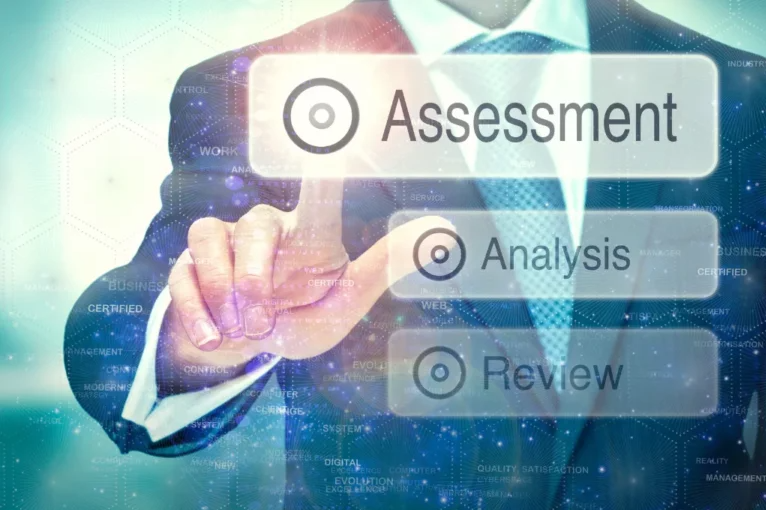In our previous sections, we covered the five elements of The Business of Law ReImagined:
- Law Firm Culture
- Change & Change Management
- Financials & KPIs
- Technology
- Pressure Points & Risk
How do we wrap all these together into a cohesive analysis?
The answer: A Legal Tech Assessment
A comprehensive technology assessment provides critical insights into a law firm’s workflows, systems, and processes. This analysis identifies areas of risk and opportunities for improvement across the firm’s technology stack.
While not a complete evaluation of the firm’s culture or security posture, an assessment answers key questions about the firm’s technology strategy and readiness for change:
- Is the technology stack fully meeting the firm’s needs? Or is outdated infrastructure limiting capabilities and efficiency? An assessment benchmarks current systems against the latest solutions and best practices.
- Is technology supporting workflows? Or hindering productivity? Analyzing how people, processes, and systems intersect pinpoints frictions to address through upgrades or process changes.
- Is the firm maximizing its technology investments? An audit identifies unused software licenses, outdated software, redundant systems, and other areas of potential cost savings.
- What is the level of satisfaction with existing technologies? Surveying end users’ experiences exposes pain points that investments in new solutions can alleviate.
- Which emerging technologies show promise for enabling innovation? Needs analysis and future visioning spot opportunities to pilot advanced systems for competitive differentiation.
- Will infrastructure changes bolster cybersecurity? Reviewing the security roadmap in tandem with technology strategy ensures defenses keep pace with new solutions.
- Most importantly, does the firm’s technology strategy align with and drive business strategy? Assessing technology’s role in core business goals – client service excellence, talent retention and acquisition, efficiency gains – ensures tech decisions deliver maximum impact.
At its heart, technology assessment spotlights the interplay between systems and people. The most sophisticated solutions fail without change management and cultural readiness. Firms must analyze whether leadership encourages technology change if existing systems hamper the adoption of new tools, and if staff feel empowered to incorporate innovations into daily tasks.
The pandemic and post-pandemic times have accelerated technology change and flexible work models. Virtual meetings and remote collaboration are the norm. Cloud platforms and SaaS models have displaced many, if not most, on-premises systems. Assessing readiness for further changes reveals gaps leadership must address through updated policies, training, and security measures that protect both staff and firm intellectual property.
Done well, assessments catalyze transformation through data-driven insights coupled with empathy for those impacted. They surface risks requiring immediate mitigation while charting a path to future innovation. The outcomes highlight strengths to double down on and paint a vision for technology that doesn’t just support the business – but actually drives growth, productivity, and differentiation.
In all cases, leadership buy-in and committed resources for assessment recommendations separate successful change management from stalled initiatives. Just as technology should accelerate business vision, assessment insights inform an evolving technology strategy synchronized with the firm’s needs and culture. This is the continuous cycle of change, underpinned by leadership’s willingness to encourage new ways of working augmented by technology.


